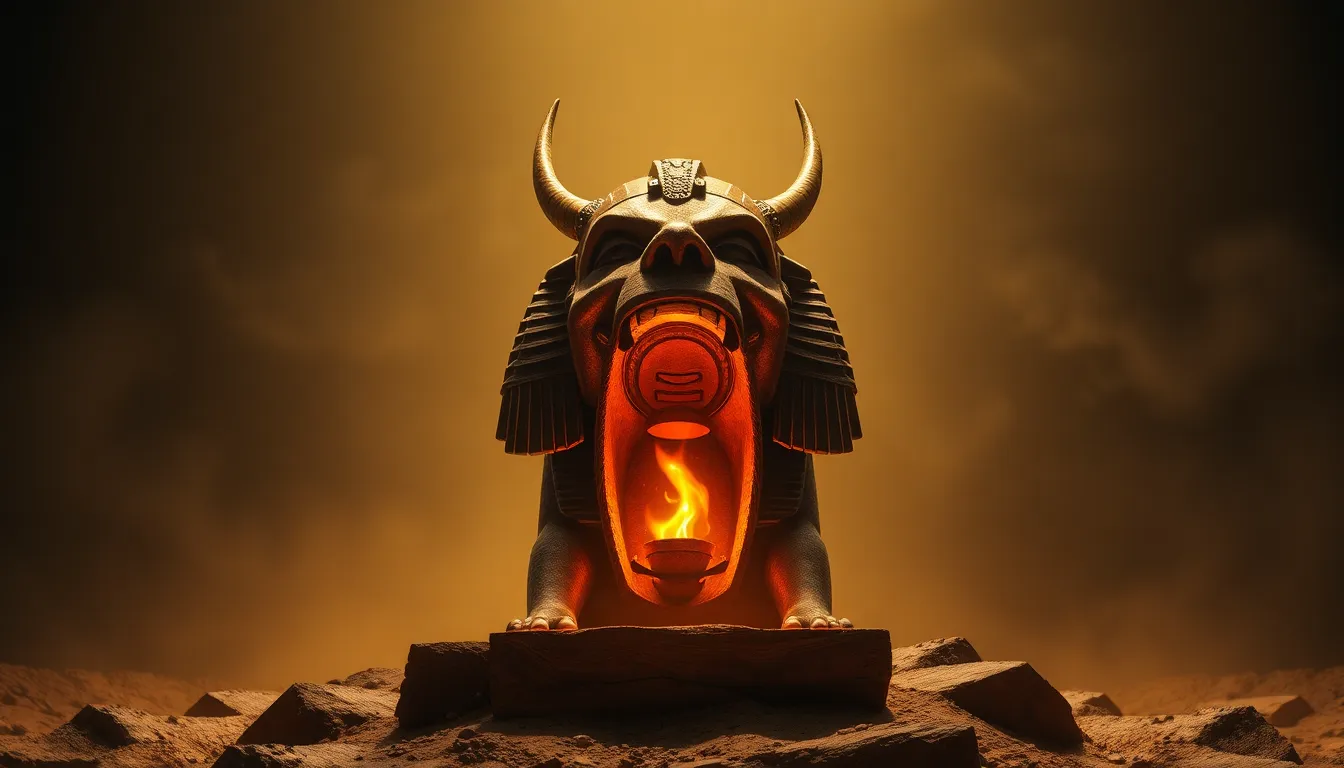The Ritual of Opening the Mouth: A Key to Royal Burials
I. Introduction
Ancient Egyptian culture is renowned for its elaborate burial rituals, which were deeply intertwined with their beliefs about the afterlife. These practices not only aimed to honor the deceased but also to ensure a successful journey into the next world. Among these rituals, the Opening of the Mouth ceremony stands out as a vital component of royal burials.
This article will delve into the significance of the Opening of the Mouth ceremony, examining its historical context, symbolism, and ritual process. Additionally, we will explore its artistic depictions, comparisons with other cultures, and modern interpretations. By the end, we hope to provide a comprehensive understanding of this fascinating ritual and its enduring legacy.
II. Historical Context of the Opening of the Mouth Ritual
The Opening of the Mouth ritual has its origins in ancient Egypt, dating back to the early dynastic period. Initially, it was a simple rite aimed at preparing the deceased for the afterlife, but it evolved into a complex ceremony over the centuries.
Throughout different dynasties, the ritual became more elaborate, reflecting changes in religious beliefs and funerary practices. By the time of the New Kingdom, the Opening of the Mouth was a crucial part of the royal funerary process, symbolizing the transition of the deceased into the realm of the dead.
This ritual was deeply connected to Egyptian beliefs about the afterlife. Egyptians believed that the deceased needed to be awakened and empowered to enter the afterlife fully. The Opening of the Mouth allowed the deceased to eat, drink, and speak in the next life, embodying the belief in a continued existence after death.
III. The Symbolism Behind the Ritual
The phrase “Opening of the Mouth” refers to the act of enabling the deceased to perform essential functions in the afterlife. This ritual held profound symbolic meaning, representing the concepts of life, death, and rebirth.
- Meaning of the “Opening of the Mouth”: The act itself was believed to restore the senses and abilities of the deceased, allowing them to engage with the world of the living and the divine.
- Connection to Life, Death, and Rebirth: The ritual encapsulated the cyclical nature of existence, reflecting the Egyptian belief in resurrection and eternal life.
- Role of Speech and Nourishment: The ability to speak, eat, and drink was essential for the deceased’s survival in the afterlife. Without these capabilities, they would struggle to exist in the next world.
IV. The Ritual Process
The Opening of the Mouth ceremony was a multi-step process, involving specific actions and rituals performed by priests and family members of the deceased.
Key steps in the ceremony included:
- Purification of the body and the ritual space.
- The use of special tools, often including:
- Ankh – a symbol of life.
- Adze – a tool used to perform the mouth-opening.
- Chanting of prayers and incantations to invoke the blessings of the gods.
- The physical act of “opening” the mouth, which might involve symbolic gestures or the actual cutting of the mouth area.
Priests played a crucial role in this ceremony, acting as intermediaries between the deceased and the divine. Royal family members also participated, highlighting the personal and familial aspects of the ritual.
V. Artistic Depictions and Archaeological Evidence
Artistic representations of the Opening of the Mouth ritual can be found in tomb paintings and inscriptions throughout ancient Egypt. These depictions provide insight into the ritual’s significance and the various elements involved.
Notable archaeological finds include:
- Tomb paintings in the Valley of the Kings that illustrate the ceremony in progress.
- Inscriptions detailing the prayers and rituals associated with the Opening of the Mouth.
- Artifacts such as ritual tools and amulets found in royal burials.
Case studies of specific royal burials, such as that of Tutankhamun, reveal the importance of this ritual in preparing the pharaoh for the afterlife and ensuring his rebirth among the gods.
VI. Comparisons with Other Cultures
The Opening of the Mouth ritual bears similarities to burial practices in other ancient civilizations, reflecting a universal human concern with the afterlife.
- Similar Practices: Many cultures, including the Mesopotamians and the Greeks, engaged in rituals to prepare the deceased for the afterlife, often involving offerings and prayers.
- Differences: The unique aspect of the Opening of the Mouth is its focus on restoring the deceased’s abilities, particularly speech and nourishment, which is less emphasized in other cultures.
- Broader Implications: Mouth-opening rituals across different cultures illustrate a common theme in human history: the desire to connect with the dead and ensure their well-being in the afterlife.
VII. Modern Interpretations and Cultural Legacy
Contemporary scholars view the Opening of the Mouth ritual as a fundamental aspect of ancient Egyptian funerary practices, emphasizing its significance in understanding their religious beliefs and cultural values.
The ritual’s influence persists in modern Egyptian culture, where elements of ancient beliefs and practices continue to shape customs and traditions. Its representation in popular media and literature often highlights the mystique of ancient Egypt, drawing interest to its rich history.
VIII. Conclusion
In summary, the Opening of the Mouth ceremony was a vital component of royal burials in ancient Egypt, embodying the culture’s beliefs about life, death, and the afterlife. Its complex symbolism and ritual process reveal the deep reverence Egyptians held for their dead.
The enduring legacy of the Opening of the Mouth ritual invites further exploration and study, offering valuable insights into ancient practices and their relevance to modern understanding of life and death.




